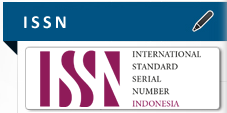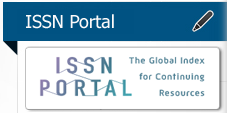SANGKETAN (ACHYRANTHES ASPERA) AGEN SITOTOKSIK POTENSIAL DI MASA DEPAN
Abstract
Abstract
Cancer become major public health burden and primary care for cancer still consists surgery, chemotherapy, radiation therapy also immunotherapy. However, harmful side effects of cancer drugs and radiation still threat to cancer patients. Chemoprevency is latest approach that growing rapidly, using natural ingredients or synthetic agents to prevent, inhibit or reverse tumorigenesis and suppress development cancer cell.
Phytochemical screening of Achyranthes aspera leaf has cytotoxicity on Artemia salina, indicates presence of essential oils, free terpenoid compounds, triterpenoid saponins, flavonoids and polyphenols. Flavonoid compounds can act anti-cancer is β sitosterol. This compound can increase proliferation of peripheral blood lymphocytes and increase cytotoxic effect of natural killer cells.
Methanol extract of Achyranthes aspera, alkaloid, non-alkaloid and saponin fractions has shown significant inhibitory effect on early antigen activation Epstein-Barr virus. In vitro study of methanol extract, non-alkaloids fraction showed most significant inhibitory activity. In vivo study, all fractions methanol extract had cytotoxic activity, which shown inhibit carcinogenesis DMBA / TPA in mouse skin.
Keywords: Cancer, Achyranthes aspera, β sitosterol, Cytotoxic
Abstrak
Kanker telah menjadi beban kesehatan utama bagi masyarakat dan perawatan utama untuk kanker masih terdiri atas operasi, kemoterapi, terapi radiasi dan imunoterapi. Namun, efek samping yang berbahaya dari obat kanker dan radiasi masih menjadi ancaman bagi penderita kanker. Kemoprevensi adalah pendekatan terbaru yang berkembang pesat dengan menggunakan bahan alami atau agen sintetis untuk mencegah,menghambat atau membalikkan tumorigenesis serta menekan perkembangan kanker.
Skrining fitokimia yang dilakukan terhadap daun Achyranthes aspera yang mempunyai daya sitotoksik terhadap Artemia salina, menunjukkan adanya kandungan minyak atsiri, senyawa terpenoid bebas, saponin triterpenoid, flavonoid dan polifenol. Senyawa flavonoid yang dapat berperan sebagai anti kanker adalah β sitosterol. Senyawa ini dapat meningkatkan proliferasi limfosit darah perifer dan meningkatkan efek sitotoksik sel pembunuh alami.
Ekstrak metanol Achyranthes aspera, pada fraksi alkaloid, non-alkaloid dan saponin telah menunjukkan efek penghambatan yang signifikan pada aktivasi antigen awal virus Epstein-Barr. Pada studi in vitro ekstrak metanol, fraksi non-alkaloid menunjukkan aktivitas penghambatan yang paling signifikan. Dalam studi in vivo, semua fraksi dari ekstrak metanol memiliki aktivitas sitotoksik, yang telah dibuktikan dapat menghambat karsinogenesis oleh DMBA/TPA pada kulit tikus.
Kata Kunci: Kanker, Achyranthes aspera, β sitosterol, Sitotoksik
Full Text:
PDFReferences
Ali, M. (2003). Oriental Journal of Chemistry, 9(1), 84-85.
Banerji, A., Chintalwar G.J., & Joshi, N.K. (1997a). Isolation of ecdysterone from Indian plants. Phytochemistry 10, 2225-6.
Banerji, A., & Chadha, M.S. (1997b) Insect moulting hormone from Achyranthes aspera. Phytochemistry 9, 1671.
Bhoomika R., Ramesh K.G., & Anita A.M. (2007). Phyto-pharmacology of Achyranthes aspera: A Review. Pharmacognosy Reviews, 1(1), 143.
Chakraborty, A., Brantner, A., Mukainaka, T., Nobukuni, Y., Kuchide, M., Konoshima, T., Tokuda, H., & Nishino, H. (2002). Cancer chemopreventive activity of Achyranthes aspera leaves on Etpstein-Barr virus activation and two-stage mouse skin carcinogenesis. Cancer Letters, 177(1), 1-5.
Departemen Kesehatan Republik Indonesia. (2015). Stop Kanker. Jakarta: Pusat data dan infomasi kementerian kesehatan RI.
Djajanegara, I., & Wahyudi, P. (2009). Pemakaian Sel Hela dalam Uji Sitotoksisitas Fraksi Kloroform dan Etanol Ekstrak Daun Annona squamosa. Jurnal Ilmu Kefarmasian Indonesia, 7(1), 7-11.
Freshney, R.I. (1987). Culture of animal cells: A manual of basic technique, 2nd ed. New York: Alan Liss Inc.
Gariballa, Y., Iskander, G.M,, & Daw El Beit, A. (1998). Investigation of the alkaloid components in the Sudan Flora. Fitoterapia 54, 269-72.
Junedy, S. (2005). Isolasi dan Uji Sitotoksisitas Senyawa Alkaloid dari Spon Koleksi no MD-02 Cyang. Universitas Gadjah Mada Yogakarta.
Kapoor & Singh. (1996) A new aliphatic acid from Achyranthes aspera Linn. roots. Indian J. Chem. 4, 461.
Kurdi, A. (2010). https://aseranikurdi.files.wordpress.com/2011/09/tanaman-herbal.pdf. di akses pada 08 Juni 2017.
Li, X., & Hu, S. (1995). Determination of oleanolic acid in the root of Achyranthes bidentata from different places of production by TLC-scanning Zhongguo Zhong Y ao Za. Zhi 20, 8, 459-60.
Muawanah, A. (2000). Skrining Fitokimia Terhadap Tumbuhan yang Mempunyai Daya Sitotoksik Terbesar Terhadap Artemia salina (Leach) dari Beberapa Tumbuhan Suku Labiatae. Universitas Surabaya.
Narayana, R.K., Reddy, S.M., Chaluvadi M.R., & Krishna D.R. (2001). Bioflavanoids: classification, pharmacological, biochemical effects and therapeutic potentials. Indian Jour Pharmacol, 33, 2-16.
Raji, R. (2013). Achyranthes aspera- Medicinal plant: A review. Int Jour Pharma and Bio Sciences, 4(1)(B), 719-724.
Ram, P., Rastogi, B.N., & Mehrotra. (2004). Compendium of Indian Medicinal plants. Central Drug Research Institute, Lucknow and National institute of science communication and information resources, New Delhi, V, 7-8, 11.
Rameswar R.D. (2007). Essential oil constituents of Achyranthes aspera leaves. Indian Perfumer, 51(1): 33-34.
Rashmi, & Dayal, R. (2003). Fatty acid composition of Achyranthes aspera seed oil. Journal of Oil Technologist’s Association of India, 53-54.
Sharma, S.K., Vasudeva, N.M., & Ali. (2009). Indian Journal of Chemistry - Section B Organic and Medicinal Chemistry, 48(8), 1164-1169.
Sharma, V., Chaudhary, U., Singh, R., & Agarwal, A. (2013a). Achyranthes aspera: phytochemical estimation. Am J Pharmtech Res, 3(2), 242-51.
Sharma, V., Agarwal, A., Chaudhary, U., & Singh, M. (2013b). Phytochemical Investigation of various extracts of leaves and stems of achyranthes aspera linn. Int J Pharm Pharm Sci, 5(1), 317-20.
Tong, X., & Peliing, J. (2013). Targeting the PI3K/Akt/mTOR axis by apigenin for cancer prevention. Anticancer Agents Med Chem, 13(7), 971–978.
DOI: https://doi.org/10.26751/ijf.v2i1.419
Refbacks
Copyright (c) 2018 Indonesia Jurnal Farmasi
Published by LPPM Universitas Muhammadiyah Kudus
Jl. Ganesha Raya No.I, Purwosari, Kec. Kota Kudus, Kabupaten Kudus, Jawa Tengah 59316
Indonesia Jurnal Farmasi indexed by

This work is licensed under a Creative Commons Attribution-ShareAlike 4.0 International License.





